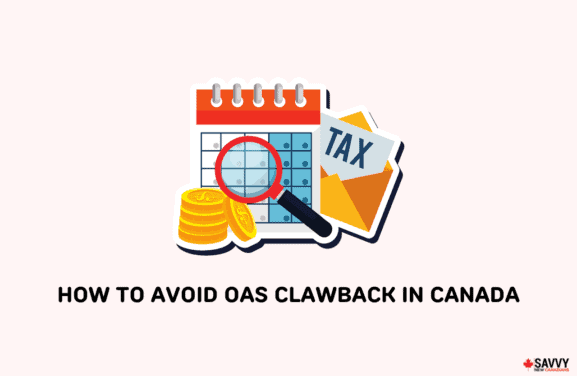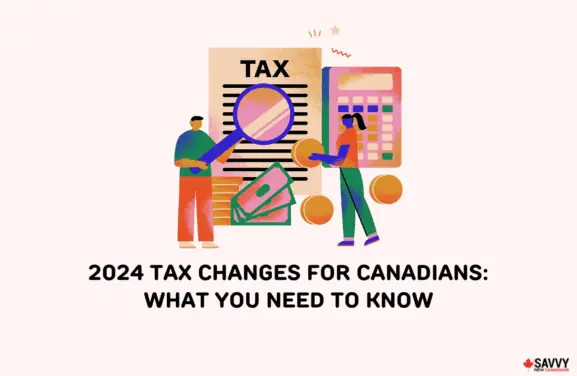Each year, Canadians are given a maximum contribution limit for their RRSP, which is adjusted based on inflation and other economic factors. The Canada Revenue Agency (CRA) has set the RRSP contribution limit for 2024 as 18% of your earned income in 2023, up to a maximum of $31,560.
As an RRSP contributor, you must be aware of their annual limit, as exceeding it can result in taxes and penalties.
Key Takeaways
- RRSP contribution limits are set annually by the Canada Revenue Agency. For 2024, the limit is up to $31,560.
- Staying within the prescribed RRSP limits can help avoid tax penalties.
- Contributing to an RRSP offers both long-term savings and immediate tax advantages.
Determining Your RRSP Contribution Limit for 2024
The RRSP contribution limit is critical for Canadian taxpayers planning their retirement savings. Understanding how to calculate this limit can ensure you maximize your contributions without paying penalties.
An individual’s RRSP deduction limit for 2024 is 18% of their earned income from the previous year, capped at a dollar maximum. This maximum limit is $31,560 for 2024 and is subject to adjustments such as the Pension Adjustment, which accounts for participation in employer-sponsored pension plans. Any unused RRSP deduction room from the previous year can be carried forward and added to the current year’s limit.
Taxpayers can find their specific deduction limit by referring to their latest Notice of Assessment provided by the CRA. The CRA website offers detailed guidance on how one’s limit is influenced by various factors.
Understanding the RRSP Deduction Limit
RRSP deduction limit and the RRSP contribution limit are often used interchangeably. The RRSP deduction limit for 2024 sets the ceiling on how much taxpayers can contribute to their RRSPs. This limit is generally 18% of the previous year’s earned income, subject to a maximum amount which is $31,560 for this year.
RRSP contributors can deduct their contributions from their taxable income and get a tax refund based on their marginal tax rate. For example, if you contribute $10,000 to your RRSP in 2024, you can claim a deduction up to this amount on your tax return in 2025. If your marginal tax rate is $35%, you will receive a tax refund of $3,500. This is calculated as $10,000 x 35% (assuming you claim a deduction for the full amount at once).
TFSA Contributions vs. RRSP Contributions
TFSA and RRSP accounts offer tax advantages for retirement savings but differ fundamentally in their tax treatment.
Contributions to an RRSP are tax-deductible, reducing taxable income for the year made (or whenever you choose to use your deduction), but withdrawals are taxed as income. Conversely, TFSA contributions do not offer a tax deduction, but withdrawals are tax-free.
The TFSA dollar limit is set annually, and any unused contribution room is also carried forward. This makes TFSAs especially beneficial for those anticipating a higher tax bracket in retirement.
For 2024, the TFSA annual limit is $7,000.
| Feature | RRSP | TFSA |
| Tax Deductibility | Contributions are tax-deductible | Contributions are not tax-deductible |
| Tax on Withdrawals | Taxed as income | Tax-free |
| Unused Room Carry Forward | Yes | Yes |
| 2024 Contribution Limit | 18% of previous year’s earned income up to a maximum ($31,560) | Set annually ($7,000 in 2024) |
Strategic Use of Contribution Room
Maximizing retirement savings can involve strategic decisions on how to utilize the contribution room in both RRSPs and TFSAs.
Individuals may consider spousal RRSP contributions, which can help even out retirement income levels for tax-planning purposes.
Additionally, the flexibility of the TFSA makes it ideal for short-term investment or as a complement to the RRSP, especially for those who have maxed out their RRSP room or expect significant pension income.
It is also advised to be conscious of other registered accounts, such as Registered Education Savings Plans, Registered Disability Savings Plans, and options for converting RRSPs to a Registered Retirement Income Fund as part of broader retirement planning.
Impact on Taxable Income and Benefits
An RRSP contribution can lower an individual’s taxable income. This reduction can affect eligibility for certain income-tested benefits and tax credits, such as the GST/HST credit and Canada Child Benefits.
Investments within an RRSP grow tax-deferred until withdrawal, which is beneficial as taxpayers may be in a lower tax bracket during retirement, thus paying less tax on the withdrawn amount.
Alternatives such as a Tax-Free Savings Account (TFSA) or an Advanced Life Deferred Annuity (ALDA) may serve as supplementary retirement vehicles to an RRSP. Each option has its own tax considerations, with TFSAs offering tax-free growth and ALDAs delaying mandatory withdrawals, potentially deferring taxes further.
Benefits Impact:
- Reduced taxable income may affect eligibility for tax credits and benefits
- Withdrawals are taxed as income at future (possibly lower) rates
- Investments, money purchase plans, defined benefit plans, and Deferred Profit Sharing Plans may also influence the retirement savings landscape and associated taxation.
Meeting the Annual RRSP Deadline
Contributions to one’s RRSP must be made by a strict deadline to count towards the previous tax year. For the 2023 tax year, funds must be deposited by February 29, 2024.
This cutoff date marks the end of the RRSP Season and allows taxpayers to claim deductions for their contributions, potentially reducing their taxable income.
Penalties for Excess Contributions
Contributing more than the allowable limit to an RRSP leads to penalties for excess contributions. For every month that the over-contribution remains in the account, there is a 1% tax per month on the amounts over the permitted limit.
Excess amounts should be withdrawn promptly to minimize penalties, and you might need to complete a T1-OVP form.
Frequently Asked Questions
The RRSP contribution limit for the 2024 tax year is calculated at 18% of the individual’s earned income from the 2023 tax year, capped at a maximum of $31,560.
Yes, you can use an RRSP contribution room calculator to determine your RRSP contribution room for 2024. These calculators require inputs such as previous years’ contribution details and income to give an accurate figure.
Unused RRSP contribution room from previous years can indeed be carried forward to 2024, allowing individuals to contribute beyond the annual limit if they have accumulated spare contribution room.
The RRSP deduction limit refers to the maximum amount one can deduct from their income for tax purposes, while the contribution limit is the ceiling on how much an individual can contribute to their RRSPs each year. The terms are often used interchangeably.
The RRSP contribution dollar limit for 2025 is $32,490.



